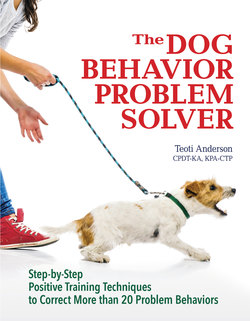The Dog Behavior Problem Solver

Реклама. ООО «ЛитРес», ИНН: 7719571260.
Оглавление
Teoti Anderson. The Dog Behavior Problem Solver
Отрывок из книги
Part I: A LOOK AT BEHAVIOR AND TRAINING
Trust between owner and dog is an all-important essential.
.....
A classic example of vague communication is the common use of the word “No!” If your dog steals your socks, you yell, “No!” You intend “No” to mean “Don’t steal my socks.” But he might interpret your “No” to mean don’t chew the sock or don’t lie down with the sock on the couch. So he still steals your socks. Worse, he brings you a sock and your sharp “No!” could teach him not to bring you a sock. So he will still go on stealing your socks, but now he’ll hide them. “No” can certainly indicate to your dog that you’re displeased, but it’s not very specific. It doesn’t tell him what you want him to do instead.
This doesn’t mean you shouldn’t ever say “No” to your dog. If you haven’t trained your dog and he’s doing something wrong—and definitely if he’s doing something that can hurt him or someone else—go ahead and use “No.” Just be aware that it’s not the best way of communicating. For example, if you teach your dog to sit, you could cue “Sit” to prevent him from jumping up on the kitchen counter. If you teach your dog to leave things alone, you could cue “Leave it!” when he’s headed for your socks, and he would understand he’s to leave them alone. “No” is just vague—it isn’t instructional communication.
.....